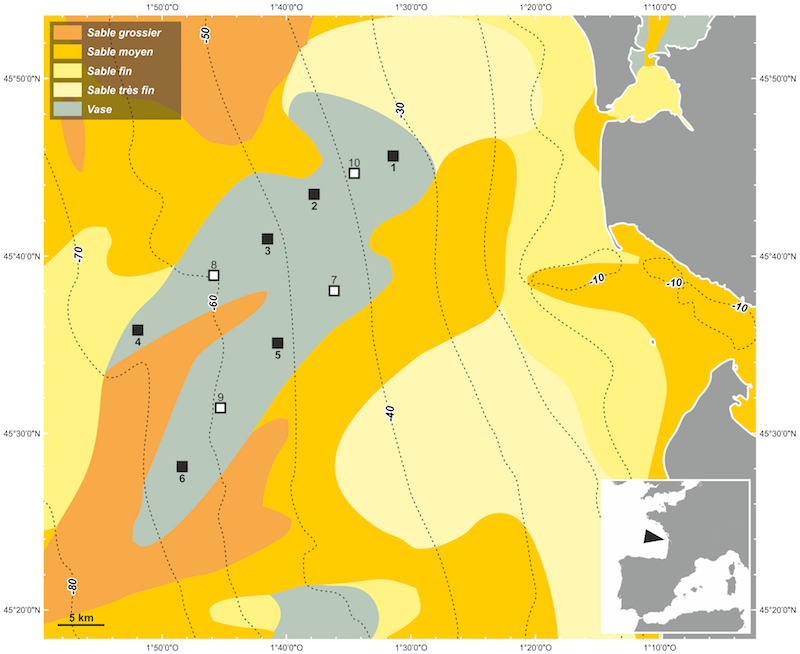
As first steps of two seasonal samplings, two cruises will first be carried out in October 2016 in: (1) the West-Gironde mud patch (SW France) from the 20th to the 31st, and (2) the Cretan Sea. These cruises aim at assessing the relationships between benthic diversity and the functioning of the water-sediment interface (remineralization of settled Particulate Organic Matter). The strategy will coupled the use of both ex-situ and novel in-situ techniques in order to link: (1) bottom water characteristics, (2) biogeochemical characteristics of sediment pore water and organic matter, (3) benthic macro- and micro-fauna diversity, (4) benthic fauna activity and (5) benthic fluxes. In the West-Gironde Mud patch, ten stations will be located along two inshore-offshore transects located in the two main lobes of the mud patch (figure). In the Cretan Sea, 5 stations will be sampled along a predefined gradient, starting from the sewage outfall of the city of Heraklion (close to the shore and at shallow depth) until a control station at 200-meter depth, where no effect of the sewage outfall should be detected.
Involved institutions: EPOC CNRS/UBdx, HCMR
